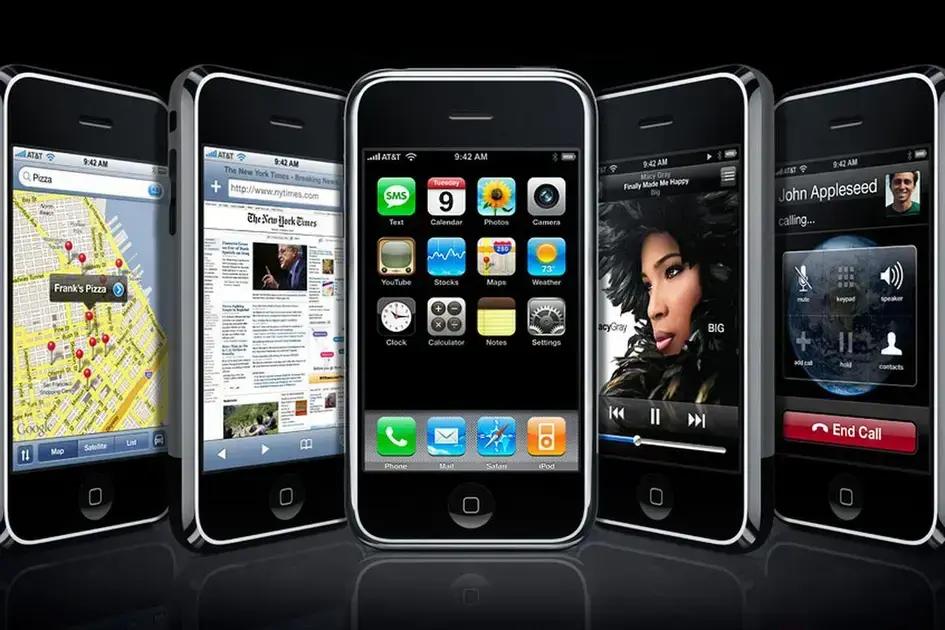Eighteen years ago, on January 9, 2007, Steve Jobs introduced the world to the iPhone and the Apple TV. These two groundbreaking products would go on to reshape their respective markets. The original iPhone combined a mobile phone, iPod, and internet communicator. The Apple TV, then called iTV, aimed to bridge the gap between computers and televisions.
iPhone’s Impact on the Mobile World
The iPhone’s unveiling marked a turning point in mobile technology. Jobs declared it a “revolutionary mobile phone” that would redefine user experience. He highlighted its multi-touch interface, sleek design, and integration of existing Apple technologies. Remember those clunky keyboards? Innovative smartphone designs have surely come a long way.
The initial iPhone offered a 2-megapixel camera, 4GB or 8GB of storage, and a 3.5-inch display. It lacked 3G connectivity and copy/paste functionality, features that would appear in later models. Consumers eagerly embraced the iPhone despite its limitations. Its software and user interface set it apart from existing smartphones. Check out new releases about Apple devices here.
The iPhone laid the groundwork for the modern smartphone era. Today’s smartphones boast powerful processors, high-resolution cameras, and lightning-fast internet access. With new technologies like foldable displays, modern cellphones are constantly evolving. Read more about the latest foldable phone technology here.
Beyond hardware, the iPhone spurred the development of the app economy. Millions of apps are available today, offering diverse functionalities from gaming to productivity. These changes have significantly impacted how people work, communicate, and entertain themselves.
Apple TV’s Evolution in Home Entertainment
The Apple TV, initially called iTV, launched alongside the original iPhone. It offered a simplified way to stream content from computers to televisions. Early models had limited storage and functionality, relying heavily on synced content. Over time, the Apple TV transformed into a standalone streaming device. Modern Apple TVs feature app support, gaming capabilities, and advanced streaming technology.
The Apple TV now integrates seamlessly with other Apple devices and services. It supports 4K resolution, high-dynamic range (HDR), and Dolby Atmos audio. The device has become a central hub for home entertainment. Many competitors like smart TVs now offer similar functions. Learn about the latest innovations in TV technology here.
The development of streaming services, like Netflix and Hulu, fueled the Apple TV’s growth. Consumers increasingly prefer on-demand content over traditional cable television. This shift in consumption patterns has shaped the landscape of the entertainment industry.
The Apple TV continues to evolve, with rumors circulating about future gaming enhancements. As technology advances, streaming devices will likely play an even greater role in home entertainment.
Eighteen years later, both the iPhone and Apple TV have become integral parts of modern life. They are examples of how quickly technology can change the world around us. Remember those flip phones and bulky TV sets? They seem like ancient history now. Speaking of old-school, some are turning to retro gaming for a touch of nostalgia. It’s interesting to see how things come full circle.
The anniversary of the iPhone and Apple TV is a reminder of the power of innovation. Both devices showcase how technology can reshape industries and revolutionize user experience. As we look to the future, one thing is certain: technological advancements will continue to surprise and amaze us. And who knows what the next big breakthrough will be? Maybe something along the lines of a ground-breaking aerial carrier?
Via MacRumors


